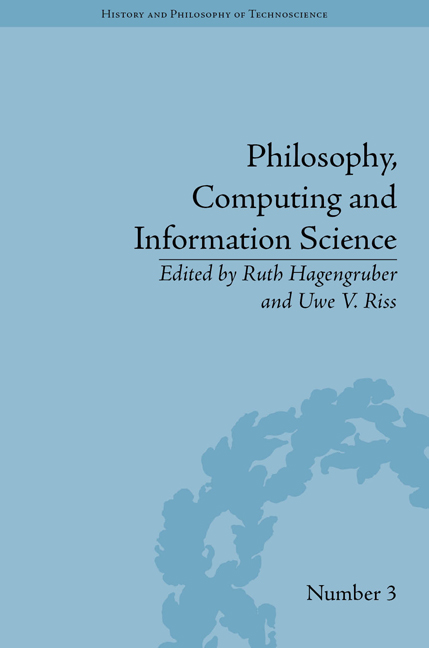Book contents
- Frontmatter
- CONTENTS
- List of Contributors
- List of Figures and Tables
- Introduction: Philosophy's Relevance in Computing and Information Science
- Part I Philosophy of Computing and Information
- Part II Complexity and System Theory
- Part III Ontology
- 7 The Relevance of Philosophical Ontology to Information and Computer Science
- 8 Ontology, its Origins and its Meaning in Information Science
- 9 Smart Questions: Steps towards an Ontology of Questions and Answers
- Part IV Knowledge Representation
- Part V Action Theory
- Part VI Info-Computationalism
- Part VII Ethics
- Notes
- Index
8 - Ontology, its Origins and its Meaning in Information Science
from Part III - Ontology
- Frontmatter
- CONTENTS
- List of Contributors
- List of Figures and Tables
- Introduction: Philosophy's Relevance in Computing and Information Science
- Part I Philosophy of Computing and Information
- Part II Complexity and System Theory
- Part III Ontology
- 7 The Relevance of Philosophical Ontology to Information and Computer Science
- 8 Ontology, its Origins and its Meaning in Information Science
- 9 Smart Questions: Steps towards an Ontology of Questions and Answers
- Part IV Knowledge Representation
- Part V Action Theory
- Part VI Info-Computationalism
- Part VII Ethics
- Notes
- Index
Summary
Introduction
Ontology – in Aristotelian terms the science of being qua being – as a classical branch of philosophy describes the foundations of being in general. In this context, ontology is general metaphysics: the science of everything. Pursuing ontology means establishing some systematic order among the being, i.e. dividing things into categories or conceptual frameworks. Explaining the reasons why there are things or even anything, however, is part of what is called special metaphysics (theology, cosmology and psychology). If putting things into categories is the key issue of ontology, then general structures are its main level of analysis. To categorize things is to put them into a structural order. Such categorization of things enables one to understand what reality is about. If this is true, and characterizing the general structures of being is a reasonable access for us to reality, then two kinds of analysis of those structures are available: (i) realism and (ii) nominalism.
In a realist (Aristotelian) ontology the general structures of being are understood as a kind of mirror reflecting things in their natural order. Those categories, as they are called in realism, then represent or show the structure of being. Ontological realism understands the relation between categories and being as a kind of correspondence or mapping which gives access to reality itself.
- Type
- Chapter
- Information
- Philosophy, Computing and Information Science , pp. 85 - 90Publisher: Pickering & ChattoFirst published in: 2014



